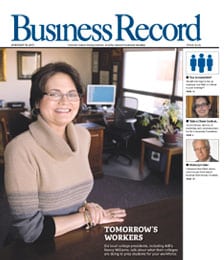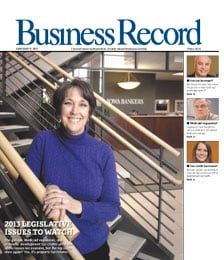How to catch a boomerang

When Jim Hardacre returned to his former position at Principal Financial Group Inc. in December after having taken a job elsewhere early last year, it was a lot like coming home.
“I would say I was welcomed with open arms and given a lot of responsibility from the get-go,” said Hardacre. A senior corporate negotiator, Hardacre had worked for Principal for more than 10 years before he took a similar position with Wellmark Blue Cross and Blue Shield early last year. Upon his return, “I was reinstated as if I had never left the organization, which I think is unusual for companies nowadays to do.”
For Sadie Piper, the lure of regular hours in the accounting department at Principal Real Estate Investors sounded like a good change from the irregular pace of audit work at McGladrey & Pullen LLP. After less than a year at Principal, however, “I just really missed the challenge of audit work, the client contact you get on a day-to-day basis with public accounting,” she said. “It just breaks up the monotony of an office job.”
McGladrey, which for years has had an active corporate alumni program, kept in touch with Piper after she left. She received the alumni newsletter and was even invited to an annual cocktail party held for former employees before she decided to contact her old boss.
“You have to swallow your pride a little bit in asking for your old job back,” said Piper, whose position at McGladrey was increased by one pay level upon her return.
Experienced employees who have left their positions to seek greener pastures aren’t always finding their dream job to be what they expected. Fortunately, more companies are recognizing that these “boomerang” employees can be a valuable resource. Not only are they welcoming former workers back into the fold, many have begun to actively recruit them through corporate alumni databases and e-mail campaigns.
Austin Palmer, president of Palmer Group, a West Des Moines-based executive search firm, said there has always been some degree of hiring back of top talent by employers.
“But given the job market today, we’ve experienced that more companies are not only open to but are more aggressively hiring back former employees,” he said. “Even in the last month of the year, we’ve heard from companies that have said this is a large part of their recruiting, including a large CPA firm, a large manufacturer and a large insurance company.”
Because they already know the corporate culture and are likely to be stepping back into similar positions, boomerangs are less costly for companies to train, and networking with former employees also enables companies to reduce their recruiting costs.
The idea is not familiar to all human resources managers, however. Paul Kopack, president of the Central Iowa chapter of the Society for Human Resource Management, said, “I don’t see it as something on the radar screen that’s being utilized a lot right now.”
However, “it’s definitely something to look at,” he added. “I think it’s novel, it’s creative, it’s proactive. And obviously, you’re going to approach only the people who are good performers.”
Principal, for instance, keeps in contact with former employees whose performance ratings were at or above certain levels before they left the company. In addition to periodic e-mail messages that provide updates on career opportunities at Principal, the company last year began a campaign to reach out to those employees by telephone, said Kathleen Souhrada, Principal’s director of employment.
“We consider it more of an exit interview covering why they decided to leave Principal,” Souhrada said. “Say it’s a stay-at-home mom who left because she needed a more part-time opportunity. We would talk to her about possible part-time work. So based on their responses, we talk to them about new opportunities that would meet their objectives.
“Our recruiters also selectively call former employees who have specific skill sets, such as information technology, to let them know about opportunities that exist currently, and talk to them about the benefits of coming back, such as salary and advancement,” she said. “Those calls are more of a sales effort.”
Though the company doesn’t track numbers on a year-to-year basis, Souhrada said more than 1,500 of Principal’s 14,000-plus employees are those who have returned after leaving for another job.
For Hardacre, who was initially hired by Principal as a paralegal in the company’s legal department before he became a specialist in negotiating with technology vendors, maintaining relationships was a key to being able to return.
“When I left Principal, I talked with the vice president of operations, who assured me that the door was always open,” he said. “I always kept in contact with my peers, and was told that there was an opportunity arising. I spoke with the leader of that organization, and the rest is history.”







